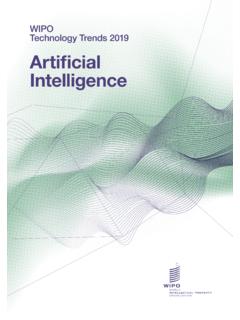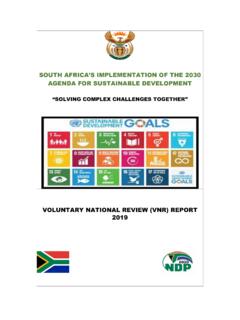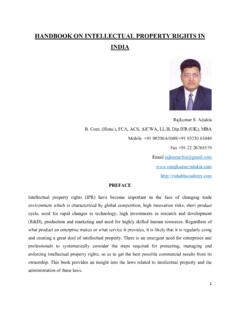Transcription of World Trade Report 2021: Economic resilience and trade
1 2021 World Trade Report Economic resilience and tradeWhat is the World Trade Report ?The World Trade Report is an annual publication that aims to deepen understanding about trends in Trade , Trade policy issues and the multilateral trading is the 2021 Report about?The 2021 World Trade Report explores current debates about Economic resilience in a global economy increasingly subject to natural and man-made shocks, and explains how the WTO can contribute to improving Economic out moreWebsite: enquiries: +41 (0)22 739 51 11 ContentsAcknowledgements and disclaimer 2 Abbreviations and symbols 3 Foreword by the WTO Director-General 4 Executive summary 6 A. Introduction 12 1. Vulnerability and resilience : two sides of the same globalization coin 14 2. More resilience requires more, not less, global Economic cooperation 18 B. Why Economic resilience matters 20 1. Introduction 22 2.
2 Economies are exposed to risks and shocks 22 3. Disruptions and shocks can cause significant loss of life and severe Economic impact 29 4. How do shocks impact international Trade ? 36 5. Economic and Trade policy response to shocks 47 6. Building and supporting Economic resilience has become a key strategy to reduce business interruptions and Economic losses caused by shocks 55 7. Conclusion 62 C. The role of Trade in Economic resilience 64 1. Introduction 66 2. Trade can be a spreader of shocks 66 3. Trade can enable countries to better prepare for, cope with, and recover from shocks 81 4. The role of Trade diversification in resilience 107 5. Conclusion 116 D. The role of international cooperation in building Economic resilience 122 1. Introduction 124 2. Why does international cooperation matter for Economic resilience and what forms does it take? 124 3. International cooperation on non- Trade policies can help reduce risk and vulnerabilities and enhance resilience 128 4.
3 International cooperation on Trade policies can reduce risk and vulnerabilities 132 5. International cooperation on Trade policies can help cope with shocks 149 6. International cooperation on Trade policies can help recover after shocks 165 7. Conclusion 168 E. Conclusion 175 Opinion pieces Stephane Hallegatte, Beyond the aggregate: defining and measuring households resilience 58 Ralph Ossa, A simple measure of Economic resilience 60 Susan Lund, How more resilient supply chains could reshape global Trade 80 Alison Gillwald, Multiple Economic resilience challenges for Africa in a rapidly digitalizing global economy 82 Chad P. Bown, Semiconductors and pandemic resilience 93 Mami Mizutori, The business case for Trade , risk reduction and resilience 133 ebnem Kalemli- zcan, The Economic case for global vaccinations 153 Ellen t Hoen, Vaccine knowledge needs to be a global public good 157 Patrick Gaul , Patents and the availability of essential goods in crises.
4 The case of COVID-19 vaccines 159 Bibliography 177 Technical notes 200 List of figures, tables and boxes 201 WTO members 205 Previous World Trade Reports 206 CONTENTS1 World Trade Report 20212 DisclaimerThe World Trade Report and its contents are the sole responsibility of the WTO Secretariat, except for the opinion pieces written by the external contributors and the boxes prepared by the WTO Chairs, which are the sole responsibility of their respective authors. The Report does not reflect the opinions or views of members of the WTO. The authors of the Report also wish to exonerate those who have commented upon it from responsibility for any outstanding errors or The World Trade Report 2021 was prepared under the general responsibility and guidance of Anabel Gonz lez, WTO Deputy Director-General, and Robert Koopman, Director of the Economic Research and Statistics Division.
5 The Report was coordinated by Eddy Bekkers and Jos -Antonio Monteiro. The authors of the Report are Marc Auboin, Marc Bacchetta, Francesco Bellelli, Cosimo Beverelli, Eddy Bekkers, Emmanuelle Ganne, John Hancock, Katharina Laengle, Kathryn Lundquist, Jos -Antonio Monteiro, Roberta Piermartini, Yves Renouf, Victor Stolzenburg and Ankai Xu ( Economic Research and Statistics Division).The following divisions in the WTO Secretariat provided valuable comments on drafts of the Report : Agricultural and Commodities Division (Jonathan Hepburn, Melvin Spreij and Christiane Wolff), Development Division (Shishir Priyadarshi and Michael Roberts), intellectual property , Government Procurement and Competition Division (Jianning Chen, Reto Malacrida, Philippe Pelletier, Astghik Solomonyan and Antony Taubman), Legal Affairs Division (John Adank, Mireille Cossy and Juan Pablo Moya Hoyos ), Rules Division (Seref Coskun and Clarisse Morgan), Trade and Environment Division (Rainer Lanz and Karsten Steinfatt), Trade in Services and Investment Division (Elena Bertola, Antonia Carzaniga, Xiaolin Chai, Dale Honeck, Markus Jelitto, Juan Marchetti, Martin Roy, Lee Tuthill and Ruosi Zhang) and Trade Policy Review Division (Willy Alfaro).
6 Director-General Ngozi Okonjo-Iweala and Trineesh Biswas from the Office of the Director-General provided valuable advice and contributions were received from Chad Bown (Peterson Institute for International Economics), Stephane Hallegatte ( World Bank), Patrick Gaul (University of Bath), Alison Gillwald (Research ICT Africa), Susan Lund (McKinsey), Ellen t Hoen (Medicines Law & Policy), ebnem Kalemli- zcan (University of Maryland), Mami Mizutori (United Nations Office for Disaster Risk Reduction) and Ralph Ossa (University of Zurich). Contributions were also received from the following WTO Chairs, in coordination with the Knowledge and Information Management, Academic Outreach and WTO Chairs Programme Division (Mustapha Sadni Jallab with support from Sandra Rossier and Qing Ye): Leila Baghdadi (University of Tunis), Tabitha Kiriti-Nganga (University of Nairobi), and Boopen Seetanah, Verena Tandrayen-Ragoobur and Jaime De Melo (University of Mauritius).
7 The following individuals from outside the WTO Secretariat also provided useful comments on early drafts of the Report : Giovanna Adinolfi, Dillon Alleyne, Venkatachalam Anbumozhi, Leila Baghdadi, Amrita Bahri, Richard Baldwin, Cecilia Bellora, Chad Bown, Lino Pascal Briguglio, Andrew Dobson, Lionel Fontagn , Emily Gray, Vanessa Gray, Stephane Hallegatte, ebnem Kalemli- zcan, Tabitha Kiriti, Jenty Kirsch-Wood, Mia Mikic, Julia Nielson, Hildegunn Kyvik Nord s, Keith Nurse, Ralph Ossa, Diane Quarless, Michele Ruta, Ana Maria Santacreu, Boopen Seetanah, Robert Teh, Frank Van Tongeren and Irina assistance was provided by Andr Brotto, Akanksha Burman, Carolin Graf, Yuliia Kucheriava, Minhee Lee, Sergio Martinez Cotto, Lucas Ouriques Poffo, Feiyang Shi, and Enxhi Tresa. Additional charts were provided by Barbara D Andrea with support from Shradha Bhatia and Yin text production of the Report was managed by Anne Lescure and Diana Dent of the Economic Research and Statistics Division.
8 The production of the Report was managed by Anthony Martin and Helen Swain of the Information and External Relations Division. William Shaw and Helen Swain edited the Report . Gratitude is also due to the translators in the Language and Documentation Services Division for the high quality of their AND SYMBOLSA bbreviations and symbolsACP Organisation of African, Caribbean and Pacific StatesAoA Agreement on AgricultureAPEC Asia-Pacific Economic CooperationASEAN Association of Southeast Asian NationsCEMAC Economic and Monetary Community of Central AfricaCOMESA Common Market for East and Southern AfricaCOVID-19 coronavirus diseaseC-TAP COVID-19 technology Access PoolDSU WTO Dispute Settlement UnderstandingEAC East African CommunityEGA Environmental Goods AgreementEIF Enhanced Integrated FrameworkEM-DAT Emergency Events DatabaseFAO Food and Agriculture organization of the United NationsFDI foreign direct investmentFTA free Trade agreementGATS General Agreement on Trade in ServicesGATT General Agreement on Tariffs and TradeGDP gross domestic productGHG greenhouse gasGPA Agreement on Government ProcurementGVC global value chainHS Harmonized SystemIATA International Air Transport AssociationICC International Chamber of
9 CommerceICT information and communications technologiesIMF International Monetary FundIP intellectual propertyIPR intellectual property rightsLDC least-developed countryMERCOSUR Southern Common MarketMFN most-favoured nationMSME micro, small and medium-sized enterpriseNGO non-governmental organizationOECD Organisation for Economic Co-operation and DevelopmentOIE World Organisation for Animal HealthPPE personal protective equipmentQR quantitative restrictionR&D research and developmentRTA regional Trade agreementSACU Southern African Customs UnionSCM subsidies and countervailing measuresSPS sanitary and phytosanitarySTDF Standards and Trade Development FacilityTFA WTO Trade Facilitation AgreementTRIMs Agreement WTO Agreement on Trade -Related Investment MeasuresTRIPS Trade -related aspects of intellectual property rightsUN United NationsUNDRR United Nations Office for Disaster Risk ReductionWCO World Customs OrganizationWHO World Health OrganizationWIPO World intellectual property OrganizationWTO Agreement Marrakesh Agreement Establishing the World Trade organization World Trade Report 20214 The
10 COVID-19 pandemic has neatly illustrated the multi-faceted ways in which globalization touches our lives. The deep interconnections of travel, Trade and financial flows that characterize our era allowed the novel coronavirus and its associated Economic shocks to spread around the World in a matter of weeks. Earlier pandemics took months, even years, to go , globalization was also at the heart of why this virus was met with vaccines in record time. Scientists were able to share ideas and technology across borders, backed by public and private funding for research and development. As the new vaccines proved to be safe and effective, supply chains cutting across hundreds of sites in a dozen or more countries came together to provide the specialized inputs and capital goods needed for vaccine production on a large scale all within a , access to COVID-19 vaccines remains highly inequitable.




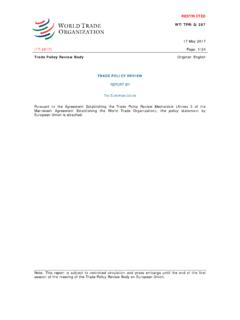
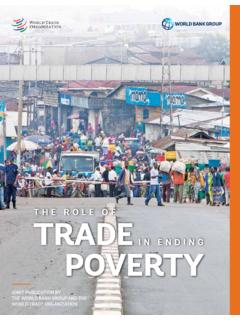

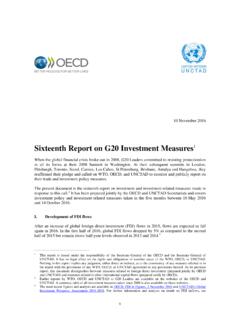


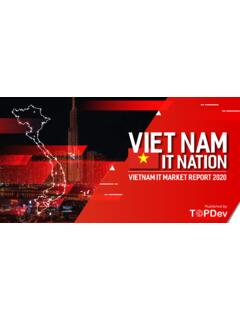
![SUBJECTWISE PRELIMS TEST SERIES 4.0, 2022 [FULL PACKAGE]](/cache/preview/e/6/c/8/c/2/6/8/thumb-e6c8c268e1cdc4dc4117f12593631c6e.jpg)
